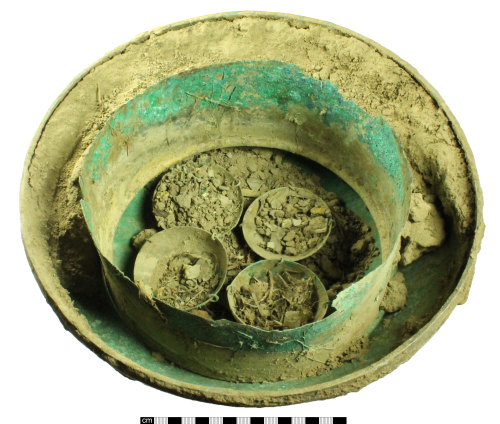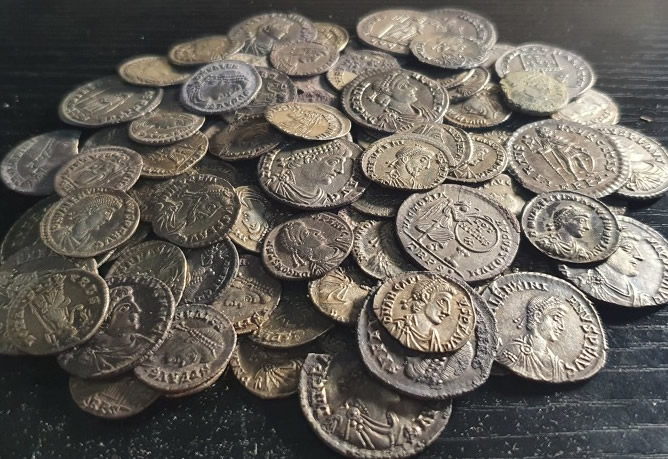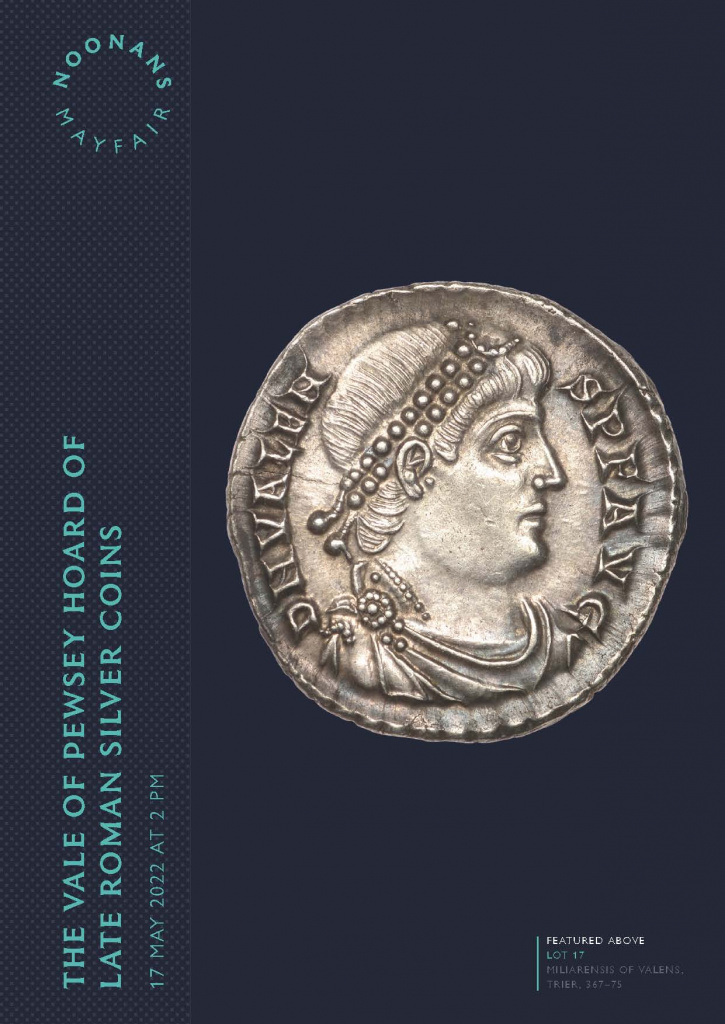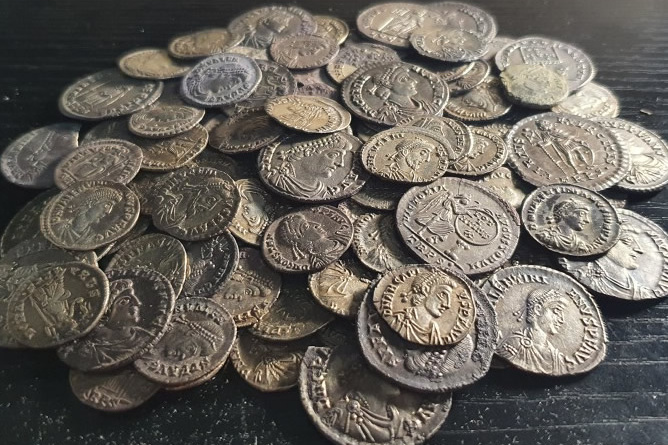Noonans to sell the Vale of Pewsey Hoard
On 17 May 2022, Noonans (the new name for DNW) are to auction the Vale of Pewsey hoard of Roman coins. It is expected to fetch £40,000. The hoard was found by three detectorists in September 2020.
Finding the hoard
Over the course of the 12th and 13th of September 2020, Rob Abbot, Dave Allen and Mick Rae found a total of 160 silver coins and coin fragments on farmland in the Vale of Pewsey, Wiltshire. The coins had been dispersed over an area of some 30 metres. It was recorded at the PAS as BM-7D34D9.
Rob said “Having finished breakfast first, I turned on my machine and having walked around six paces from the tent, I found several tent pegs and just under the surface a late Roman silver siliqua in pristine condition. A few moments later beside it, I found another one. Ironically, we had been camping there two weeks previous for a week-long detecting outing. What we hadn’t realised is we’d actually camped right on top of the area where the coins were found.”
Rob continues “Towards the top end, nearer to the land owner’s house, we tend to find earlier Roman coins and brooches of the second and third centuries. Around half way down, near where the hoard was situated, the odd siliqua and numerous fourth century bronzes have been found. We rarely get any artefacts or pottery from this area, but occasionally a lead steelyard weight does come up“
Previous find
The same trio have had a significant find previously in the same field. On Sunday 26 October 2014 they unearthed a Roman hoard of copper-alloy vessels. It was recorded at the PAS as WILT-0F898C where it was designated a Find of Note of National Importance.

Photo: Salisbury and South Wiltshire Museum CC By SA2.0
This hoard was of eight Roman vessels; seven of which were tightly packed inside an iron rimmed cauldron. The importance of this hoard was that the conditions inside the cauldron had preserved the organic material, used to pack the other items.
Analysis of this material provided insights into the date, season and context of this act of structured deposition.
Vale of Pewsey Hoard
The hoard consists of The hoard consists of 23 silver miliarenses, 137 silver siliquae and one copper alloy nummus. The siliqua was the main silver denomination of the late Roman period and the miliarensis was double this denomination.

The hoard has been through the treasure process. Two miliarensis were acquired for the Nation’s collection and the remainder disclaimed. The hoard contains coins from Constans (337-350) through to Honorius (393-423).
The auctioneer said “The hoard was buried at a time when Roman rule in Britain under the Emperor Honorius was no longer viable with the army being recalled to protect other provinces.”
Damaged coins
A few of the coins were badly damaged, probably from agricultural activity. The auctioneers said “We should be enormously grateful, therefore, that the hoard was recovered when it was before more coins succumbed to a similar fate. Numismatists and historians alike should appreciate the diligent efforts of these three finders in rescuing the Vale of Pewsey Hoard and ensuring that this important group was properly recorded for future study.“
Cleaning of the coins
Virtually, all of the coins are in mint condition and have not even needed to be cleaned since their discovery. However, a few were encrusted with heavy deposits. They were cleaned by Noonans’ in house expert, Nigel Mills.

Nigel reports “after an initial soak in detergent to loosen the deposits, electrolysis was used with citric acid as the cleaning agent. Under a microscope the surfaces were then examined and any remaining deposits were carefully removed. The results can be seen in the before and after pictures“
Auction of the Vale of Pewsey hoard
The auction of the Vale of Pewsey hoard is on 17 May 2022

Details of the auction can be found on Noonans auction page.
The catalogue is available as an online catalogue, pdf or can be viewed as a digital catalogue.
Only the coins in a fragmentary condition have been retained by the finders. All of the remaining 142 complete, or near complete, coins are listed in the auction.
Rob said “we’re looking forward to the auction – but we have no idea how we’ll spend the money.”
There will be a review of the lots in the auction in next week’s update.

